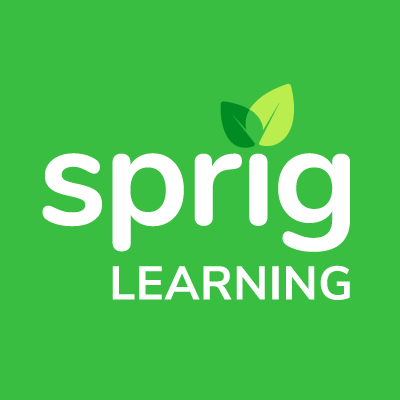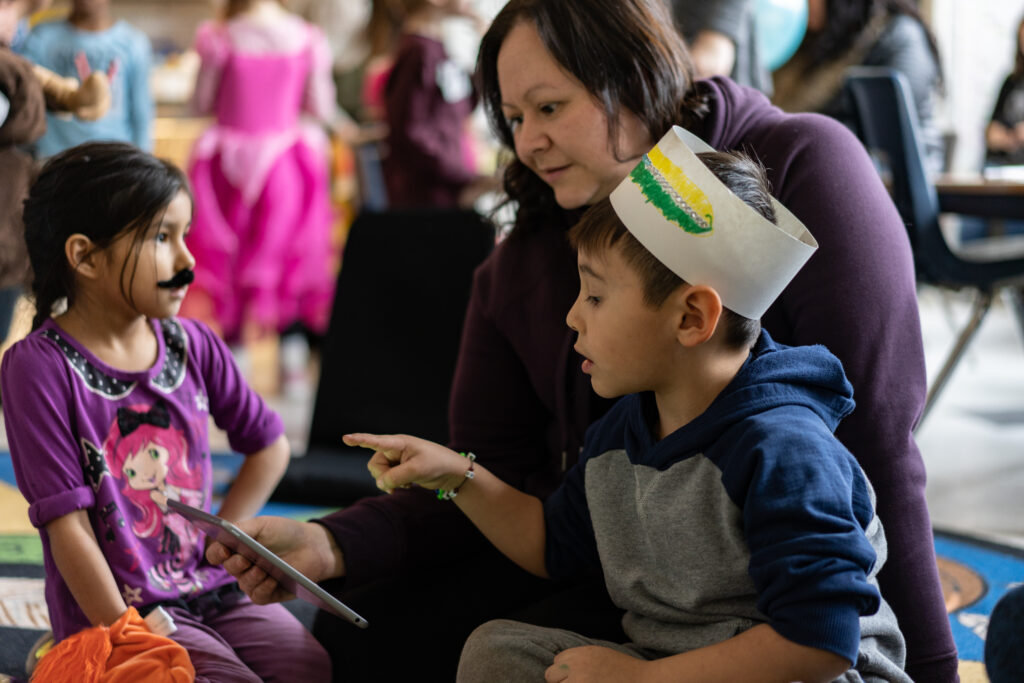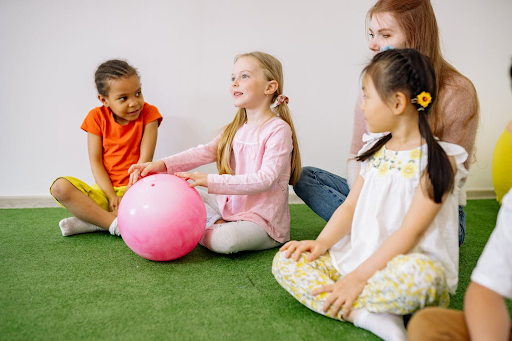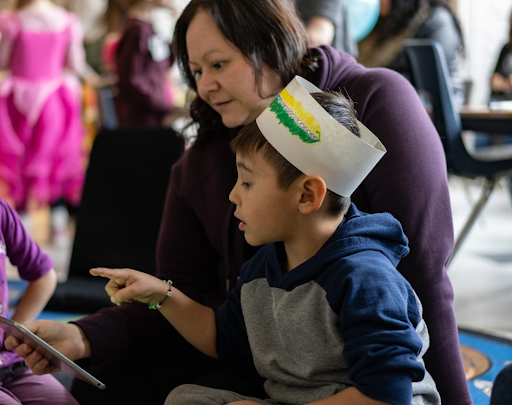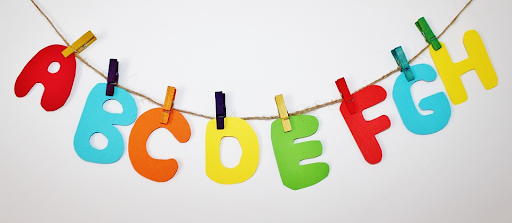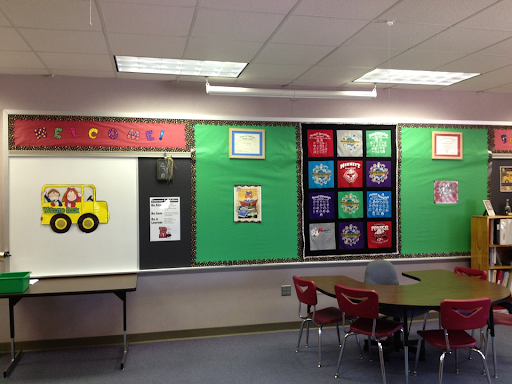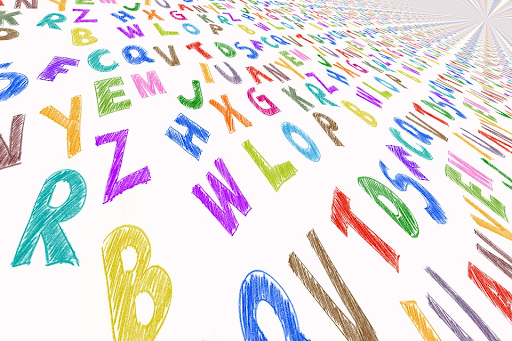46 Stories of Improving Early Literacy Achievement in Schools
Sprig covers all the latest Pre-K to 3 announcements, projects, practices and stories in its newsletter, Root to Fruit, twice a month. If you are interested in the latest early learning news and updates, definitely join as a reader, so you never miss an edition.
A common feature of the newsletter is covering stories which discuss schools, school districts and school boards continually innovating to raise early literacy achievement for their youngest learners.
This information is curated fresh twice a month, vetted for relevance in the early education sector, and presented to Root to Fruit readers.
If you are a reader, you are accustomed to these stories.
To celebrate the upcoming 30th edition of Root to Fruit on Dec 7th (subscribe today if you want to receive the edition on that day), Sprig has accumulated 46 stories from prior editions to demonstrate what can be done to improve early literacy achievement.
For the benefit of those not subscribed yet, this article is a compilation of all stories on improving early literacy achievement in schools and preschools. It features reading instruction strategies, tactics and action plans that have been considered or instituted by schools and early learning centers.
It is important to note that all of these stories have come from schools or early learning centers, because stories from other stakeholders are also covered in Root to Fruit, which are pertinent to the improvement of early literacy.
These include teachers from unnamed schools, state legislature, federal and state programs, stage offices, foundations, think tanks, researchers, academic institutions, assessment centers, teacher’s associations, journalists, etc.
But all of the news items in this article have come from identified schools/school boards/school districts and preschools/early learning centers.
The stories are divided into improving early literacy achievement in early learning centers/preschools (Stories 1 to 7) and schools/school districts/ school boards (stories 8 to 46). Where appropriate, certain stories have been lumped together where the recommendation or action taken is the same.
If you want to implement some of the solutions suggested in these stories, please do have a look at Sprig’s homepage, where you can find reading, oral language, math and Indigenous language solutions, depending on your needs.
Improving Early Literacy Achievement in Early Learning Centers/Preschools (Stories 1 to 7)
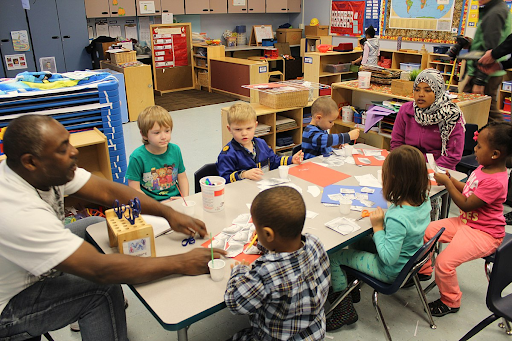
1.The Saint Joseph Early Learning Center: Elongating Early Learning Instruction Time and Expanding Early Learning Options
The Saint Joseph Early Learning Center out of Missouri, USA is a consolidated preschool that has been well-received by the community. Children from multiple preschools were transferred into a single location, where students attend for a half day (either morning or afternoon).
The school district is exploring a longer school day to take in more students who are turning 3 throughout the year. Location expansion is another option for the future, but currently this is the solution devised to handle the need for additional classrooms.
2. Brooklyn Kindergarten Society: Culturally Responsive High Quality Offerings
With preschool and kindergarten kids back at school, Melisha Jackman, executive director at early-childhood education provider Brooklyn Kindergarten Society talks about three strategic priorities she’s embracing for this school year: 1) be more “culturally responsive to the needs of their children”, 2) focus on “high quality offerings”, and 3) ensure the “ infusion of inquiry, learning and creativity” from teachers to students.
3. Bright Horizons Program: Proactively Seeking Parental Involvement
Cheretta Triplett-Smith, Director of the Bright Horizons program in Chicago says that parents have a lot more information now when comparing high-quality early education programs. She makes it clear that Bright Horizon takes a whole child approach, which focuses on school readiness by working on cognitive and language skills to communicate, but also the social and emotional skills to work with others. She asks parents to inquire about “teacher training and age-appropriate teaching methods” before enrolling their child to a preschool.
4. UC San Diego’s Early Childhood Education Center: Foster Play-based and Inquiry-Based Learning
Matthew Proctor is the new director at UC San Diego’s Early Childhood Education Center, which provides child care and education services to all faculty members, staff and students. He talks about how the center curriculum focuses on child discovery where young students initiate learning. The objective is to embed math, language and other subjects naturally into what the children are already interested in playing. His goal is to further expand the program to accommodate more students.
5. Little Nooks Preschool: House Preschool on Main School Site
Little Nooks Preschool will open in Kalama, Washington. The program will be fully inclusive and housed inside the local elementary school so kids are used to the building when transitioning to kindergarten. Superintendent Eric Nerison states the need for “early childhood development and kindergarten readiness” in Southwest Washington.
6. Rainbow Dreams: Adopt A Specialized Curriculum for Early Childhood Education
Rainbow Dreams in Clark County Nevada is an early learning center that houses only Pre-K and kindergarten classes. The school follows a full day model for both grades. The curriculum is hands-on, play-based, and with a purpose. It promotes age-appropriate rigorous learning. Rainbow Dreams officials believe in a structured education for young children, choosing to specialize in early childhood education. The enrollment was higher than anticipated this year, signaling an unmet need in the market.
7. The DeKalb County School District: Create New Centers in Existing Schools
The DeKalb County School District in Georgia is planning to add six new early learning centers in its existing schools between 2026 and 2030. Currently there are two such centres, which are not nearly enough to cope with the demand for early childhood education in the state’s third largest school district. The project will cost $15 million in total, and it is part of the 2022-2023 tentative budget that will be finalized in June.
Improving Early Literacy Achievement in Schools/School Districts/School Boards (Stories 8-46)
8. Winnipeg School Division: Set up an Office Dedicated to Educational Equity
Winnipeg School Division’s board of trustees has approved a motion to establish an education equity office by August 2022. It’s one among many examples of primary, secondary and postsecondary institutions taking such an initiative. Along with academic success and personalized learning, education equity also features as a prominent goal for many school districts in North America. It is a critical component of any school’s strategic vision. This is not surprising, given that Generation Z is the most diverse generation to date in North America.
9. Kinoomaadziwin Education Body: Ensure Smooth Transitions Between Grade Configurations
Ontario and the Kinoomaadziwin Education Body have agreed to a three year $7.9 million agreement to support Anishinabek students in the province. The Master Education agreement includes improving access to culturally relevant resources and supports, supporting transitions between First Nation Schools and provincially funded schools (92% of Anishinabek students attend provincially funded schools), and sharing more data between the two education systems.
10. Fort Worth School District: Ensure Learning Outside of the Classroom
Preschool and kindergarten students in the Fort Worth School District in Texas visit the museum every other week to learn about science and history. It is part of the Legacy Program, which brings diverse opportunities to students who need them.
Implement Full-day Kindergarten
11. Boise School District
Boise School District in Idaho has approved free full-day kindergarten in all of its 32 elementary schools. Previously, full-day kindergarten was offered at 20 elementary schools. Superintendent Colby Dennis says that full-day kindergarten improves students’ literacy, math and social skills. It also makes enough time for both instruction and intervention. Governor Brad Little has proposed to devote $47 million for literacy programs in Idaho.
12. The Grande Prairie Public School Division (GPPSD)
The Grande Prairie Public School Division (GPPSD) in Alberta, expanded its pilot full-time kindergarten program from 6 to 13 of its 15 elementary schools in the district. Superintendent James Robinson says that the KinderPAL program has received glowing reviews. The program consists of curricular-focused lessons, but also structured playtime with early learning certified instructors.
13. Louis Riel School Division
Louis Riel School Division is planning to expand full-day kindergarten in south-east Winnipeg in 5 new buildings. It will also spend nearly $1 million dollars on diversity and inclusion initiatives including hiring more Indigenous educators and supporting ongoing reviews of curricula. Also included in the new proposed budget is a reduction of K-3 average class sizes. Smaller classes are a mark of high-quality education.
14. The Twin Falls School District
The Twin Falls School District in Idaho will offer full-day, tuition-free kindergarten at each of its nine elementary schools, beginning in the fall of 2022. Previously, five of its elementary schools had the program. Such an expansion was made possible by the increased state funding, as the state’s annual literacy budget increased from $26.1 million to $72.7 million. Director of Elementary Program, Jennine Peterson, says that less catching up is needed in Grade 1 if more time is allotted in kindergarten to build foundational skills.
Use Learning Recovery Funds Appropriately
15. Pittsburgh Public Schools
Pittsburgh Public Schools’ superintendent, Wayne Walters says that “unfinished learning is multi-faceted and it’s not just instructionally-based.” Student achievement data last fall showed that Pittsburgh students in grades 2-7 had only three-quarters of the academic growth in math as they would in a typical year, and two-thirds in math.There is a focus on providing students with grade level work, but also providing remediation to those lacking skills to do this work. Certain schools in the school district had K-2 literacy specialists prior to the pandemic. Other school districts are looking to spend a portion of their ESSER money into providing K-3 literacy support.
16. The West Branch Local School District
The West Branch Local School District in Beloit, Ohio, used its ESSER funds to introduce intervention initiatives for students who are not meeting grade-level standards. From kindergarten through Grade 5, the interventions use phonics programs which provide a consistent approach for building literacy skills. The small group sessions focus on comprehension, self-correction and fluency. Approximately 35% of grade 3 to grade 5 students have been moved out of this program due to demonstrated improvement.
17. The Upper Grand District School Board (UGDSB): Rely on More than One Source of Assessments to Track Progress
The Upper Grand District School Board (UGDSB) in Guelph, ON, is requesting a deferral of the Education Quality and Accountability Office (EQAO) testing in Grade 3 and Grade 6 by a year. Board trustee Mike Foley believes that the results would be skewed right now due to the increased anxiety and stress the students are facing. UGDSB’s Director of Education, Peter Sovran assures that besides the EQAO assessments data, the district also has report card data and teacher assessments data to understand student progress.
18. Somerset School District: Reconfiguring Grades to Foster a Bridge Between Pre-K and Early Elementary
The school district at Somerset, Massachusetts, is considering a reconfiguration of their early grades. Some potential options include pre-K to Grade 2, and Grade 3 to Grade 5. Neighboring school district at Westport had previously maintained a similar configuration, but recently changed again to a pre-K to kindergarten and Grade 1 to 4, configuration. Housing all grade levels in the same building helps to share knowledge and resources among teachers. Westport Superintendent, Thomas Aubin, is evaluating new configuration options again to increase literacy scores of students.
Personalize Learning via One-on-one Tutoring
19. Toronto District School Board
Toronto District School Board’s (TDSB) trustees discuss the need for greater personalization to better serve students. It includes figuring out who needs access to laptops, one-on-one tutoring, interviews with counselors, etc. TDSB is facing a funding shortfall of $60 million. The earlier cutbacks of reading coaches, speech pathologists, and social workers have not fared well at this time, when students need more help than ever.
20. Alexandria City Public Schools
April is school library month in the US, and Alexandria City Public Schools (ACPCS) in Virginia, provides its first grade students with one-on-one reading support twice a week to help strengthen their literacy skills. ACPCS libraries allow students to explore different types of literature, and use technology to get access to different sources of information. Superintendent Gregory Hutchins encourages all families to help their children read at home each day or participate in a literacy program.
21. Springfield Public Schools: Appoint Strategic Positions for Elementary Schools
Springfield Public Schools in Missouri, have announced a slew of leadership changes for the upcoming school year. Superintendent Grenitha Lathan says that “To achieve growth, we must objectively assess our strengths and identify areas for potential improvement”. One high-priority area of focus is Springfield’s elementary schools, where oversight will be shared amongst three leaders. There are new hires in the chief strategy and innovation officer and chief academic officer positions as well.
22. The Foothills School Division: Hire More Personnel to Provide Consistent Interventions
The Foothills School Division in Alberta is on a hiring spree to help students in grade 2 and 3 with their learning recovery. Assistant Superintendent of Learning Services, Caroline Roberts says that they are making use of a grant that was focused on literacy and numeracy in the early years.Teachers and educational assistants have been hired to deliver consistent intervention services. These services will soon be extended to grade 1 as well. In total $673,000 will be spent.
Provide Ample Professional Learning Opportunities
23. Vernon School District
Vernon School District in British Columbia is supporting schools and teachers by providing key resources and professional learning opportunities in literacy research approaches. This year has seen a particular focus placed on the primary years of learning. The district is working with early language and literacy consultant Dr. Donna Kozak, on “systemic literacy practices” and the possibility of “becoming more responsive” to young students in kindergarten and grade 1.
24. The Lethbridge School Division
Beginning in September 2022, Alberta students will learn a new curriculum for K-3 English Language Arts and Literature and K-3 Math. But, there is a cloud of uncertainty over its implementation as the curriculum is not available yet. In a survey, 86% of Alberta Teachers’ Association members disagreed that they had the resources or supports needed to successfully implement the draft curriculum. The Lethbridge School Division Superintendent, Dr. Cheryl Gilmore, says that necessary structures will be put in place to prepare teachers and students before fall.
25. Union County School District: Focus on High Dosage Tutoring
Union County School District in North Carolina had adopted intensive tutoring before it became standard practice for remediating learning for returning students. It invested in technology related professional development which focused on the personalization of instruction and increasing the student’s role in choosing class activities. Superintendent Andrew Houlihan noted that the district’s high-poverty, lowest-performing schools were struggling with math, and implemented small group instruction to remedy it. Having proof of its effectiveness, it was similarly rolled out for students in all schools who had suffered from the learning interruption.
Facilitate Teacher Collaboration
26. Little Rock School District
The Little Rock School District in Arkansas will close two of its 26 elementary school campuses in the 2022-23 school year. The school board voted to do this in order to generate savings to account for salary increases. Another reason was to maximize student’s academic benefits from larger schools which have multiple teachers per grade level and who collaborate on instruction. Collaborative planning is one of the best practices of effective teaching.
27. Holyoke Public Schools
At least half of the students, at all grade levels, at Holyoke Public Schools in Massachusetts are struggling with reading. The gap in learning is more pronounced in the lower grades, with 60% of Grade 2 students needing urgent intervention. Valerie Annear, the district’s chief instructional officer, said that the dip in literacy in Grade 2 is a national phenomenon. Though disappointed with the data, she urged for more well-rounded educational experience and giving teacher’s more collaboration time.
28. Ripple Rock Elementary: Employ Literacy Intervention Specialists to Focus on Foundational Skill sets
Ripple Rock Elementary in BC is providing individualized tutoring services to kindergarten and Grade 1 students to help with literacy. The program uses literacy intervention specialists who work on phonics, sight word acquisition, fluency, and comprehension with the students in face-to-face, one-on-one tutoring. This early literacy program is part of the efforts to improve literacy, which is one of the goals of the district’s strategic plan. Students are thus far very engaged, and an increase in grade-level reading proficiency is expected.
Focus on Biliteracy
29. The Lower Kuskokwim School District
The Lower Kuskokwim School District in Alaska visited the Grand Prairie Independent School District in Texas to discuss dual language best practices in the early grades. The former is working to preserve the Indigenous language of Yup’ik. The latter’s dual-language program focuses on promoting language skills, and also biliteracy and biculturalism. The program focuses not only on language, but also on culture and identity. By accessing the right content, students are fully immersed in their Indigenous language before proceeding with English.
30. Appoquinimink School District
Students are faring well in the Dual Language Immersion (DLI) programs in Delaware, which was first introduced 10 years ago. DLI programs offering either Spanish or Mandarin are in 12 of the 15 school districts that operate elementary schools in Delaware. Students usually opt in the program in Kindergarten or Grade 1. The data shows that immersion students are doing as well or better than their counterparts in state assessments, while becoming proficient in two languages.
31. Graciela Garcia Elementary
Graciela Garcia Elementary, in Pharr, Texas, is a dual-language school where 77% of the students are emergent bilinguals. Maureen Ibarra, who teaches fluency and reading comprehension to students from grade 2 to grade 5 says that during the pandemic, many kids lost access to an adult who could help them with their assignments in their second language. There was a gap in learning for returning students. More holistic approaches for English learners are being considered.
Create New Schools and Gradually Add Grade Levels
32. The Loyola School
The Loyola School will be awarded Loyola University Maryland’s 2022 Milch Community Partnership Award for its service to families in Baltimore, Maryland. The school consists of an early learning center and a new elementary school, which plans to add a new grade level each year until 2025. The school seeks to improve socioeconomic disparities that exist in the city, through commitment to early childhood education and holistic development of children.
33. The Festus R-6 School District
The Festus R-6 School District in Missouri will have its own early learning program beginning in August 2023. Property has been bought for the site and the administrators have been selected who will head this project. The decision was made after seeing success in a neighboring school district’s program, the Dunklin R-5 School District. But with its own program, more preschool-aged kids can enroll and greater academic continuity can be achieved as they transition from preschool to kindergarten.
34. Natomas Unified School District
In California, despite overall declining school enrollment in the state, suburban Sacramento is seeing an increase in enrollment due to more housing being built in the community. Natomas Unified School District in the city, opened a TK-8 school last year to account for the increasing student population. Elk Grove Unified School District, also in Sacramento, will open a new elementary school in the beginning of the next school year.
35. Change Health Charter School: Promote Learning Outside the Classroom
Change Health Charter School in Parkland County, Alberta, has a grand vision for outdoor learning. It wants to teach its kindergarten to Grade 9 students Alberta’s curriculum using the YWCA Camp Yowochas’s facilities, which is a 60 acre, year-round outdoor education centre. What is learned in the classroom in the morning can be experienced first-hand in the afternoon in a cross-curricular delivery model, says Camp Yowochas community manager Felicia Ochs. The school plans to open in September 2023.
36. Los Angeles Unified School District: Reduce Class Sizes
In the Los Angeles Unified School District, half of students are not meeting grade-level goals for reading and math, and the gap between students from disadvantaged backgrounds and those from well-to-do communities is widening. Superintendent Alberto Carvalho has proposed some solutions to reverse the trends. They include expanding the school year, reducing class sizes, increasing the frequency and quality of summer schools, adding professional development systems for teachers and launching new opportunities for early learning.
37. Taylor School District: Focus on Hands-on Differentiated Instruction
In the Taylor School District in Wayne County, Michigan, the kindergarteners and grade 1 students play math games, which they have come to love, receiving positive encouragement as they progress. They are part of the math enrichment program, called High 5s, developed by the University of Michigan. It’s a hands-on, small-group program that has helped close the achievement gap, raising the number of students who performed at grade level by 20 percentage points. The program has also increased kindergartener’s math performance by 15%.
38. School District 8 (SD8): Develop a Long-Term Literacy Plan
School District 8 (SD8) in Kootenay Lake, BC, has developed a three-year district literacy plan to improve literacy proficiency, after data revealed a dip in reading and writing scores among primary learners. The Primary Literacy Coherence model looks at class profile to see what needs to be worked on for each student from kindergarten throughout their primary years. Currently, the focus is on building capacity for Grade 1 and 2 teachers.
39. Waterloo Region District School Board: Ensure there is Professional Development in Utilizing Technology
The Waterloo Region District School Board (WRDSB) is offering a variety of reading and math support in classrooms, and providing educators with additional professional learning to address any learning gaps. With increased funding from Ontario’s Learning Recovery Action plan, WRDSB has also extended its Summer Learning Program from Kindergarten to Grade 2, to Kindergarten to Grade 6. Associate Director Lila Read says that there has been unprecedented skill development in the utilization of technology.
40. Rhodes School District: Create More Resource Rooms
Rhodes School District in River Grove, IL, will add 8 new classrooms devoted to Kindergarten and Grade 1, as a part of its $14 million expansion. Included in the expansion is a large courtyard featuring two outdoor classroom spaces, breakout rooms for private individual or group instruction, and reading areas. To facilitate student learning, the need for more resource rooms was a common suggestion from teachers
41. The Oxford School District: Engage with the Community
The Oxford School District and the Lafayette County School District in Louisiana, have developed a literacy education program called Lafayette Oxford University Early Learning Collaborative (LOUELC). Last year, the program increased the reading proficiency of pre-K students from 19% to 72%. A big part of the program is a collaborative group of local organizations and community leaders, who work together to focus on targeted efforts to improve reading, both inside and outside the classroom.
Provide Summer Learning Opportunities
42: Greene Elementary School
The North Carolina State Department of Public Instruction (NCDPI) recently released information showing that students (on average) fell 2 to 15 months behind their academic pace. NCDPI says that students will need intensive academic intervention to get back on track. West Greene Elementary School Principal, Phil Cook, says that professional development, guiding resources, differentiated instruction and summer learning are all being used to cover the learning gaps.
43. Algoma District School Board
Algoma District School Board (ADSB) is offering the Elementary Summer Learning Program this year during the summer break. The objective of the program, which focuses on literacy skills in the primary grades, is to provide literacy intervention to those students who really need it, and to minimize the summer learning loss. ADSB has registered 101 in-person attendees and 13 virtual attendees for the program so far.
44. The Fulton City School District: Appoint Early Learning Specialist Positions
The Fulton City School District (FCSD) in New York has created a new Director of Early Childhood position. Kelly Gates, Instructional Coach for pre-K to Grade 2, has been appointed, based on her vast experience in providing direct coaching support to teachers, assisting with their lessons, and providing feedback and resources. With this appointment, FCSD Superintendent Brian Pulvino hopes to provide educational experiences that are engaging and developmentally appropriate.
45. Steamboat Springs School District: Introduce New Literacy Focused Curriculums
Steamboat Springs School District received a $1.2 million grant from the Colorado Department of Education to hire three full-time literacy coaches, and a literacy consultant who will create measurable goals for the district. Part of this focus on early literacy also includes introducing a new literacy-focused curriculum across the district to implement a more consistent approach to reading instruction.
46. Shelby County Schools: Affect Evidence-based Instructional Changes
Alabama State Department of Education named Shelby County Schools and Cullman City Schools as the only two Alabama Science of Reading Spotlight school districts. This distinction is for their strong commitment to supporting the implementation of the Science of Reading (SoR) for K-3 students, sustaining evidence-based instructional changes and setting high expectations. Local reading specialists were properly backed by the leadership in these two districts to deepen teachers’ SoR knowledge.
Do you enjoy hearing such stories of innovation from schools working to increase literacy rates? There is more from where this came from! This article will be updated in the future. You can always visit the Sprig Blog for the latest Sprig Article, or simply subscribe to our newsletter, Root to Fruit, which provides a blog roundup twice a month.
